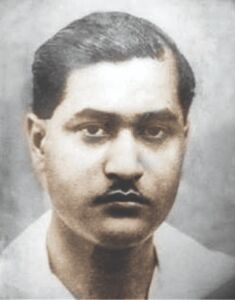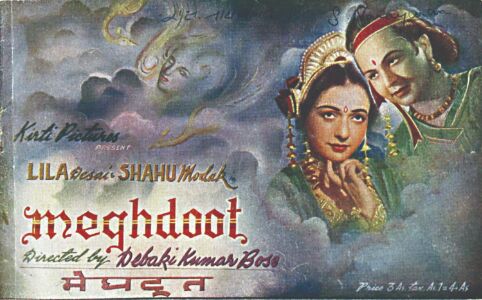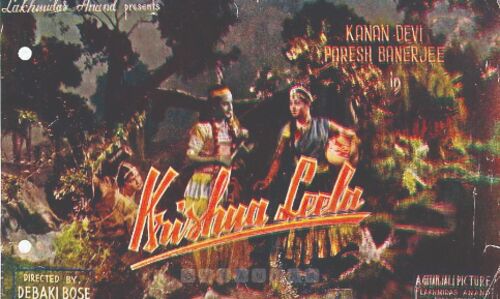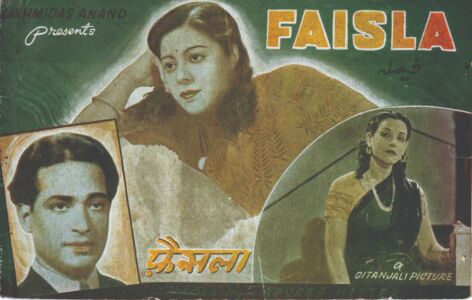With a career of about fourteen years, Dasgupta have approximately 8,000 songs under his belt including 80 Bengali movies – his unique contribution was the invention of a shorthand method for swaralipi.
In the 1940s, he was a star composer. He had many firsts to his name. He was the most educated man across the industry in those days. He came to the rescue of singers who were trying to break into the music world. He gave music in the most successful films of the 40s. The sale of his private records touched an all-time high. Yet the man behind many unforgettable melodies has been forgotten – he was Kamal Dasgupta.

Kamal was born on July 28, 1912, in Kalia village in the district of Jasore, then in British India (now in Bangladesh). He was initiated into music by his father Prashanna Dasgupta. He later learnt it from his brother Bimal Dasgupta. Afterwards, he became a disciple of the legendary Dilip Kumar Roy and Ustad Zamiruddin Khan. He did his matriculation from Calcutta Academy. Later, he completed his B Com from Komila Victoria Collage. He joined Banaras Hindu University (BHU) for his masters. He earned his PhD from BHU for his work on Mirabai’s bhajaans and music.
Kamal Dasgupta was a versatile musical genius. He used to sing modern songs in Bangala, Hindi, Urdu and Tamil.
He was a brilliant composer who composed around 8,000 songs. His first composition was recorded in 1932 in the voice of Satyaboti. His composition was classical based and folk music. Later he tended to lean towards Thumri style and Naats.
In 1935, Kamal Dasgupta joined the Gramophone Company of India in Calcutta as a music director. During this stint, he developed a close and lasting association with the poet Nazrul Islam. They became fond of each other and the relationship lasted for eleven years (1934-45). The culmination of their friendship were 400 songs – inspired by the works of the poet.
Calcutta was the major hub of Indian films produced in the 1930s. New Theatres and Madan Pictures were the main studios along with the other companies. After earning a name with his compositions, Kamal tried his luck in films. His first picture was Pandit Moshai (1936) in Bangla which was followed by Sarbjanin, Vivahotsab and Devyani between 1936-1942.
The legendary actor, director Prathmesh Chandra Barua was impressed by his music and gave him a break in Jawaab in 1942. PC Barua directed both the version in Hindi and Bangla. The film was an instant hit. It had cult numbers like Toofan mail ye duniya toofan mail, Ae chand chhup na jana and Kuchh yaad na rahe.
Kamal Dasgupta’s next film was MP productions social, Hospital, starring Kanan Devi, Ahindra Choudhary and Heeralal. Its hit number was, Ghata chhayi ghanghor. The very same year he did another Barua Production, Ranee. The cast included J Ganguly, Kalawati, PC Barua and Jamuna. Like his earlier films, his music became popular.

Kamal Dasgupta was as successful in films as he was in his private recording career. In 1944, he moved to Bombay and did the film Meghdoot (1945), based on the Sanskrit poet Kalidas. Leela Desai and Sahu Modak were in the lead. The film was directed by the legendary Debki Kumar Bose.
During his stay in Bombay, he did several films across different genres. His next film was Arabian Nights, directed by Niren Lahari. The cast included Kanan Devi, Nawab and Robin Majumdar. All the numbers of the film became very popular – Suno suno kya ek naya fasana, Hum dil ko, dil hamko samjhaye, Mujhe sapno se kaun jagaye re and Aankhon ki roshni hai dil ki ye ye chandani hai. The same year, he did a social film Bindiya, starring Ragini, Amar, M Shakeer and E Billimoriya. The film was directed by CM Luhar. Kamal Das Gupta used the voices of Anima Dasgupta, Kalyani Das, Hemant Kumar and Amar. Its hit numbers were: Hanso hanso ae kamal kali, Jeevan sargam pe aye jaa geet suhane, Meri aankhon mein ye aanshu nahi dil ki kahani hai and Chand pass hai raat andheri kyun.

His next film was the mythological Krishna Leela (1946) which was directed by Debki Kumar Bose and had Kanan Devi and Paresh Banerjee in the lead. The popular hits in this film were: Man mein basa le manmohan ko, Prabhu teri maya jo chahaye, Sawan ki rani aaiye, Chanda door gagan mein bulaye, More janam janam ke saathi, Bahein churaye jaat ho nirmal mohe jaan and Tera ghar man mera.

1946 was the busiest year for Kamal Das Gupta. He did Zameen Asmaan for director Dwarka Khosla, starring Ranjana, Jeevan and Kusum Deshpande. Its hit numbers were: Ek raat kabhi aisi aye, Papiha papiha to pee ko pukaar and Ek geet sunana hai hamein. Coming back to Calcutta, he did Faisala (1947) followed by Manmani. The film had Ragini and Jairaj in the lead. The film was directed by Sarvottam Badami. Its hit numbers were: Ishare ishare mein duniya bana li, Baiman tori batiya jadu bhari and Ae chaman bata kyun hansta hai.
His last film with his mentor PC Barua was Iran Ki Ek Raat (1949) – a costume drama, starring Jamuna, Narang, Chandrakant and Chandrawati.
Its melodious number were: Ulfat mein jise banaya tha, Chhalke chhalke sarabein jawani ke palaye, Kaun hai teer andaaj bada, Ae dil kya and Khel hai ye zindagi.
His last release was Phulwari in 1951. He had 40 films to his credit. Following this, the maverick composer got completely disillusioned by the film industry and recording companies. His favourite songs which were sold in the lakhs didn’t carry his name on the jackets.
At the age of 44, he married his favourite singer, Firoza Begum and embraced Islam. Kamal Dasgupta, by now, became Kareemuddin Ahmed. He kept on doing movies whenever an offer came. His last film in Bangla was Bodhu Baran in 1967. He shifted to Dhaka. When Bangladesh became independent, he became a citizen in 1972.
The composer was a man of taste. He owned a Buick, a rare thing in Calcutta in the 1950s. He was a great human being. He fed hundreds of people during the Bengal famine. He was also extremely fond of cricket. He was blessed with three sons – Shafin Ahmed, Hamin Ahmed and Tahsin Ahmed. They followed their father in music and cricket. Two brothers played cricket at the state level and Hamin Ahmed was selected for the national team of Bangladesh.
Kamal Das Gupta with his failing health and lack of proper medical treatment succumbed to his ailments and passed away in Dhaka on July 28, 1974, at the age of 62.
source: http://www.millenniumpost.in / Millennium Post / Home> Sunday Post> Beyond Bygone / by Sharad Dutt / March 07th, 2020